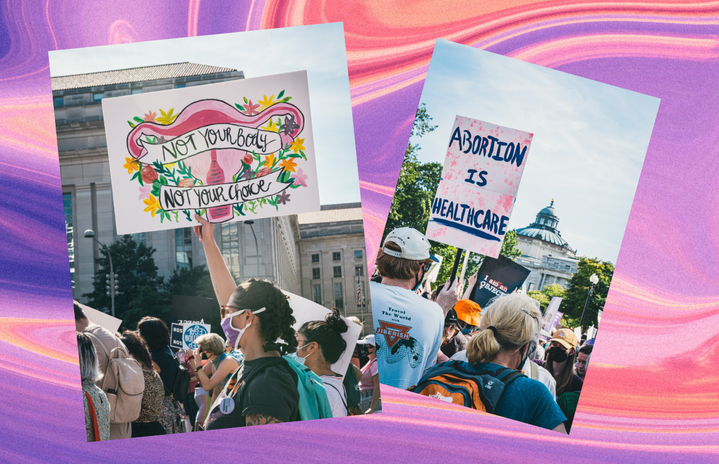TW: abortion
Netflix has released a new film, which on the surface seems like exactly what young women need. A reassuring and emotional reminder that everything will be okay no matter what life throws at you. However, in the current political climate of the US, did the film miss the opportunity to step up and address current women’s issues?
The film starts the night before Natalie’s graduation, where the story splits into two timelines, one where she discovers that she’s pregnant and moves back in with her parents in Texas to navigate motherhood, and the other where she moves to LA to pursue a career in animation. It portrays her life as she moves on from college, Natalie experiencing highs and lows in her career as a childless woman and as a mother in separate timelines, although ultimately finds success and happiness on both paths.
While Look Both Ways shows that carrying a pregnancy to term doesn’t necessarily end career prospects, it doesn’t acknowledge the discussion of abortion for young girls. Even though Natalie has meticulously planned the next five years of her life, intending to focus on creating a career for herself in LA, she doesn’t consider the possibility of abortion, even though for a woman in her situation, it seems unlikely that the possibility wouldn’t at least be discussed. The only mention of abortion comes from the baby’s father, who reassures her in an emotional scene by saying “this is your choice”, and “I’m pro-your-choice,” but neither of them even mentions the word abortion.
Roe v Wade was a vital piece of legislation which protected women by making access to safe abortion a federal right for women in the United States. In an unprecedented attack against women, on the 24th of June 2022, the Supreme Court in the US overturned Roe v Wade, provoking many states to take action and make abortion illegal. One of these states is Texas, which has banned abortion after six weeks, by which most women don’t know they are pregnant, particularly in unplanned pregnancies.
In states where abortion is illegal, ectopic pregnancies and miscarriages may be construed as abortion-related, meaning an unplanned pregnancy can mean a scary and uncertain time for women and their lives.
Natalie’s future doesn’t hinge on a decision to carry her pregnancy to term, but simply that her pregnancy happened at all. When she discovers that she may be pregnant, then that she is pregnant, she seems heartbroken and upset, A satisfying justification for why she eventually decides to keep the baby is not provided, simply saying that “It feels like something I have to do.” This film could have been a great way to show young women that they are supported in every decision they decide to make, however, it completely missed the mark in its inability to discuss the woman’s choices.
Look both ways does an incredible job of showing that no matter what happens in life, you’ll be okay, but in a political environment where the decisions of thousands of women are being made by the nine Supreme Court justices, eliminating the discussion around choice in a film about an unplanned pregnancy is tone-deaf and completely misses the mark. Especially in a time when media content is so prevalent and influential in our lives, the lack of discussion around termination is out of touch. Abortion should not be a taboo subject that can only be mentioned through code.


